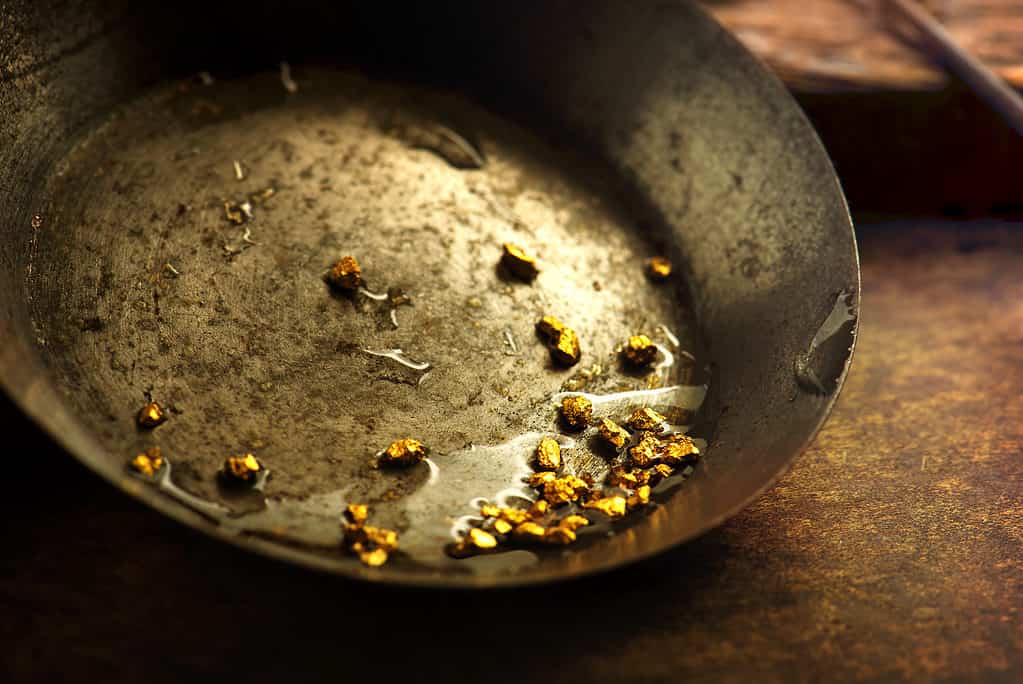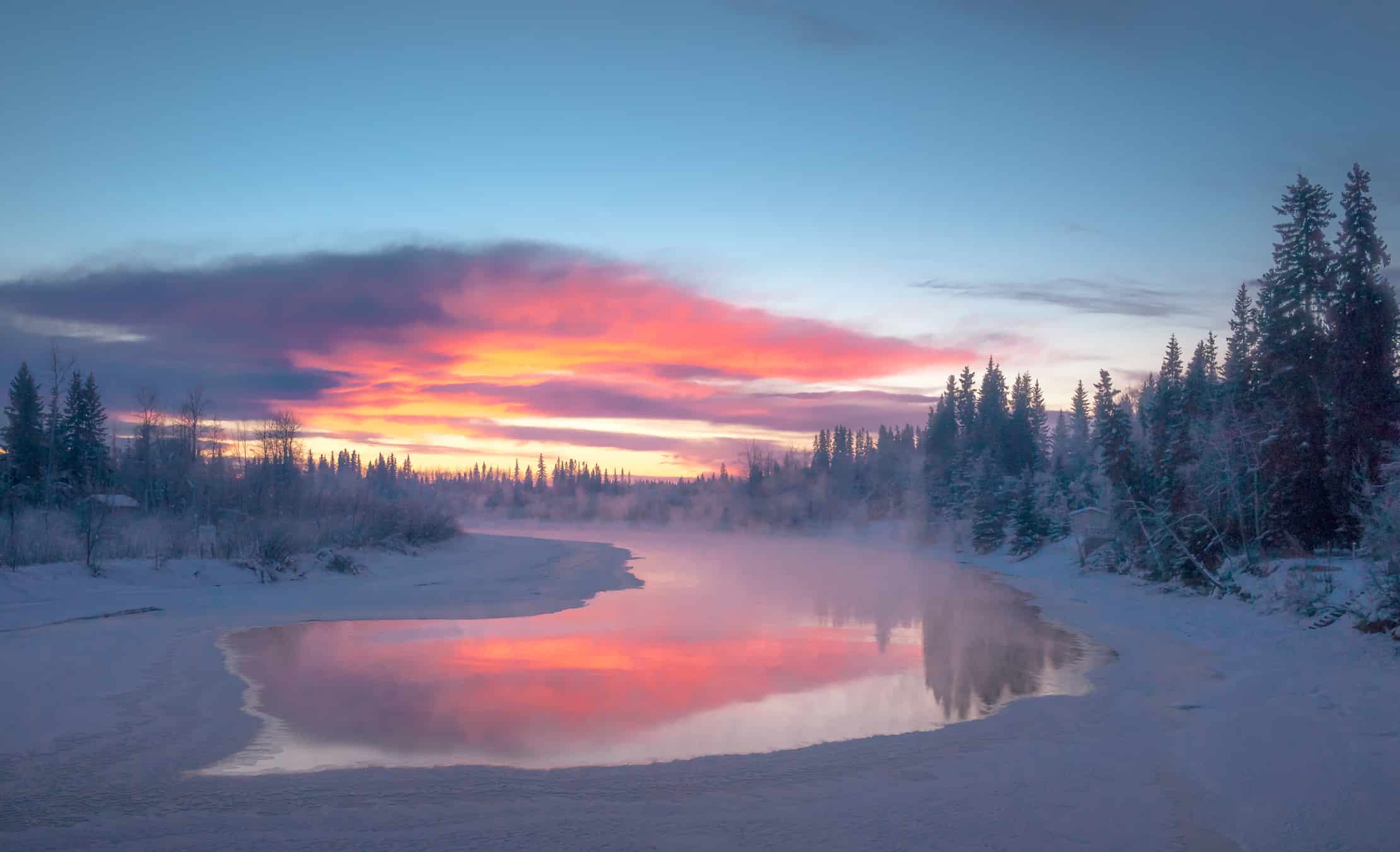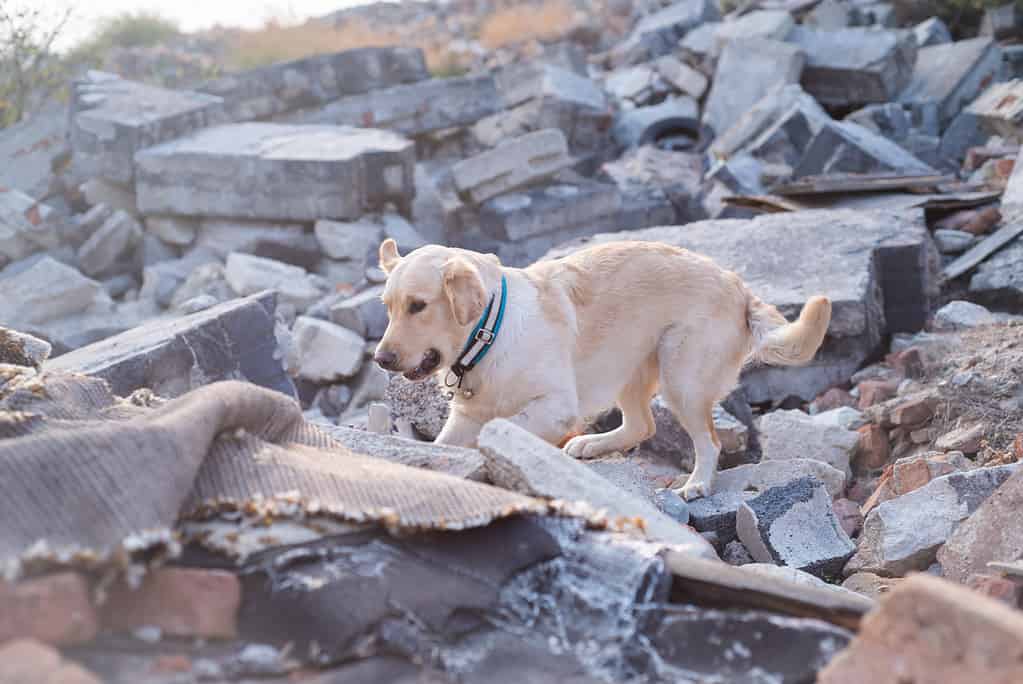Earthquakes are a well-known phenomenon across the United States, with varying degrees of seismic activity from the East Coast to the West Coast. Alaska and its towns are no strangers to this phenomenon.
Particularly known for earthquakes is the West Coast, where states like California, Washington, and Oregon are nestled along the boundaries of tectonic plates, leading to frequent seismic activity.
But it’s Alaska that takes the top spot for the most seismically active state.
Alaska’s position along the Pacific Ring of Fire, a significant region within the Pacific Ocean’s basin that witnesses a high frequency of earthquakes and volcanic eruptions, establishes it as a prime area for seismic events.
The state’s continuous interaction between the Pacific and North American tectonic plates leads to frequent tremors, making earthquakes a part of everyday life for its residents.
Despite this, Alaskans have adapted remarkably well, with robust infrastructure and a well-prepared population that continues to thrive amidst the Earth’s natural rumblings.
In this article, we discover the Alaska town most likely to experience an earthquake. Then, we explore its rich history, demographics, and diverse wildlife.
The Alaska Town Most Likely to Experience an Earthquake
With an Earthquake index of 59.18, Badger is the Alaska town most likely to experience an earthquake.
Badger is a small town in Alaska with a big story to tell. Perched on the northern tip of North America, this unique locale is nestled amidst beautiful landscapes and a vibrant community. But there’s more to Badger than meets the eye.
Known for its chilly weather and warm hearts, Badger is also a seismic hotspot, and we’re not just talking about the temperature here. It’s one of the most likely places in the United States to experience an earthquake, thanks to its location in the Pacific Ring of Fire.
What Does Badger’s Earthquake Index Mean?

It is important to note that the earthquake index is just a measure of the seismic hazard in an area.
©MD_Photography/Shutterstock.com
The Earthquake Index, a key measure developed by the United States Geological Survey, helps us understand the seismic risk of a particular location. It paints a picture of both the frequency and intensity of earthquakes, offering a gauge of what to expect and how to prepare.
When it comes to Badger, a small yet spirited town in Alaska, the figures tell a compelling story. Badger’s Earthquake Index sits at a striking 59.18—a number that significantly overshadows those of recognized seismic hotspots in the country. But what does this figure actually mean for Badger and its residents?
Perspective on the Numbers
To truly appreciate Badger’s Earthquake Index, it’s helpful to compare it with other seismically active states. For example, California, known for its well-publicized and often destructive earthquakes, has an index of 21.8. This figure is less than half of Badger’s index, indicating a substantial difference in seismic activity.
Other seismically notable states like Hawaii and Washington register even lower on the index, with respective values of 13.37 and 4.04.
These figures reflect a composite score of earthquake frequency and intensity. Thus, an index of 59.18 for Badger suggests not only a high occurrence of earthquakes but also an elevated risk of substantial, high-magnitude events.
Implications for Badger
So, how does this high index translate into daily life in Badger? Firstly, it means that residents of Badger live with a much higher likelihood of experiencing an earthquake than even those in California or other earthquake-prone areas.
But a high Earthquake Index is not just about risk—it’s about resilience and preparedness. For the residents of Badger, this index signifies the importance of earthquake-resistant infrastructure, robust emergency protocols, and community preparedness measures.
History of Badger
Let’s delve deeper into the fascinating history of Badger, AK, and see how this small town has evolved over the years.
The Early Settlers
Long before the official establishment of Badger, the area was home to indigenous peoples who thrived in harmony with the land. The Tanana Athabascans were the first to settle in the region, relying on fishing, hunting, and gathering for sustenance. As time went on, other settlers arrived in the area, attracted by the natural resources and the promises of a new life.
Gold Rush and Beyond

The early 20th century saw the arrival of gold prospectors hoping to capitalize on Alaska’s resources, resulting in Badger’s growth.
©optimarc/Shutterstock.com
The early 1900s saw a massive influx of gold prospectors driven by the dream of striking it rich. As a result, Badger became a bustling hub for gold miners and logging companies looking to capitalize on Alaska’s untapped resources. Though the gold rush eventually waned, Badger continued to draw people in, thanks to its abundant timber and thriving fur trade.
The Birth of Badger’s Identity
During the 1940s, Badger saw a boom in construction due to its strategic location. In addition, military installations were built in the vicinity, further boosting the town’s economy and population. This period of growth solidified Badger’s status as a significant Alaskan community. As the town expanded, residents began developing the infrastructure that would support its growing needs, such as schools, healthcare facilities, and recreational amenities.
Overcoming Challenges
Over the years, Badger faced its fair share of challenges, including:
- Harsh winters
- Isolation
- Occasional economic downturn
Yet, its resilient citizens always found ways to persevere. Through community support and a strong work ethic, the people of Badger turned those challenges into opportunities for growth and progress.
Embracing the Future
Fast forward to the present day, and Badger is a thriving town that strikes a balance between honoring its history and looking toward the future. New businesses have set up shop, and residents have access to modern amenities like high-speed internet and green energy options. Yet, as Badger continues to grow, the community remains committed to preserving its natural beauty and nurturing the spirit that has defined it for over a century.
How Many People Live in Badger?
Nestled comfortably in the heart of the Fairbanks North Star County, Badger is a little slice of Alaskan paradise that boasts more than just stunning wilderness. But let’s get to know its people, shall we?
Population
Badger is home to 21,175 people. It might seem like a drop in the ocean compared to big cities. But remember, we’re in the heart of Alaska here! This isn’t just a number; it’s a community—and one that’s close-knit, resilient, and welcoming.
Land and Water

Frozen Chena River in Fairbanks, a town just next to Badger, AK.
©iStock.com/Elizabeth M. Ruggiero
In Badger, there’s room to breathe. This lovely town spreads out over 65.63 square miles of land and includes 1.08 square miles of water. The lakes here are serene, perfect for a calm day out or just to remind you of nature’s presence.
Economic Outlook
Now, let’s talk about life in Badger. With a median household income of $78,157 recorded between 2010 and 2014, Badger’s residents were doing quite well for themselves. And the homes they lived in? The median house value stood at a decent $209,600. So, these folks aren’t just surviving in this chilly wonderland; they’re thriving.
Education
In Badger, they believe in the power of good education. As a result, the public school district has a reputation for quality that goes above and beyond the state average. That’s right; this small town ensures its young minds get the best start possible.
Wildlife in Badger
So, we’ve talked about the humans of Badger. Now, let’s shift gears and delve into the world of critters, creatures, and everything in between that share this town with its two-legged inhabitants.
Wildlife in Badger is as diverse as its people. This Alaskan town is nestled right at the heart of nature, making it a living, breathing animal kingdom. From your backyard to the edges of town, the air buzzes with life that’s wild, free, and absolutely breathtaking.
Birds

A majestic bald eagle is one of the common sights you can see in Alaska.
©iStock.com/Kandfoto
Let’s kick off our wildlife tour with the feathered friends. Bald eagles, sandhill cranes, owls—you name it, Badger’s got it. The town’s forests, wetlands, and skies serve as home to a wide variety of birds. They’re a common sight, whether you’re out on a leisurely hike or simply enjoying a cup of coffee in your backyard.
Mammals

Meet the Alaskan giant moose, a truly extraordinary moose that has captured the world’s attention with its astounding size and grandeur.
©JT Fisherman/Shutterstock.com
Now, onto the furrier residents. Moose is one of the most iconic animals you’ll spot around this Alaska town, often seen wandering about or munching on shrubs. Then, of course, there are the namesakes of the town, the badgers, although they’re a bit more elusive.
In the surrounding woods, you might spot black bears and foxes, or if you’re lucky, even a lynx or two. These mammals, each in their own way, contribute to the delicate balance of the local ecosystem.
Life Underwater
We can’t talk about Alaskan wildlife and not mention the aquatic life. The region’s lakes and rivers teem with salmon, trout, and pike. These waters provide sustenance for both the animals and humans in town.
Coexistence and Conservation
Living in Badger means sharing your space with the local wildlife, a fact that residents respect deeply. Efforts are ongoing to protect the wildlife and their habitats. Locals understand the importance of living harmoniously with these animals. After all, they were the first inhabitants of this beautiful town.
The Impact of Earthquakes on Wildlife
Living in this Alaska town isn’t just about breathtaking views and friendly neighbors; it also comes with a few shakes and jolts. Yes, we’re talking about earthquakes. We’ve discussed how they affect the people and infrastructure. But let’s shift our lens to the lesser-known victims—the wildlife.
Animal Instincts and Earthquakes

In the midst of seismic activity, animals’ instincts kick in as they go into high alert.
©Noska Photo/Shutterstock.com
Ever heard stories about animals acting strange just before an earthquake? Unfortunately, there’s some truth to that. From pets to wild creatures, animals have been known to exhibit unusual behavior before seismic events. Some theories suggest they might sense the initial, less violent waves of an earthquake, the so-called P-waves, which humans can’t detect.
Immediate Impact
When the earth shakes, wildlife reacts much like we do. They feel the ground rumbling beneath their feet and respond in instinctual ways—birds might take flight, while mammals like moose and badgers may seek out safer ground.
Aquatic creatures aren’t exempt, either. Changes in water pressure during an earthquake can disorient fish and other water-dwelling species. In some cases, seismic activity can lead to landslides in rivers and lakes, disrupting the habitats of aquatic creatures.
Long-Term Consequences
The aftermath of an earthquake can significantly impact animal habitats. Landslides may block animal migration routes or bury food sources. Changes to the terrain can affect the availability of shelter. In the longer term, these changes can lead to shifts in the local ecosystems, altering predator-prey dynamics and impacting biodiversity.
Adaptation and Survival
Nature, however, is remarkably resilient. Animals have an amazing ability to adapt and survive, even in the face of natural disasters. For example, in the wake of an earthquake, wildlife populations often rebound over time, though the process can take years.
Humans to the Rescue
It’s not all up to Mother Nature, though. Humans play a crucial role in aiding wildlife recovery after earthquakes. This could mean everything from rehabilitating injured animals to rebuilding disrupted habitats to implementing conservation strategies that help safeguard biodiversity.
Where is Badger, Alaska Located on a Map?
Badger is an Alaskan census-designated place located within the Fairbanks North Star Borough. Established in 2010, it was formed by merging various small suburbs and the outskirts of Fairbanks. Spanning an area of 66.71 square miles, Badger encompasses 65.63 square miles of land and 1.08 square miles of water.
Here is Badger, Alaska on a map:
Key Takeaways
We’ve had an intimate stroll through the captivating town of Badger, AK. Who would’ve thought that nestled amidst the icy Alaskan wilderness, we’d find a place buzzing with such warmth, resilience, and community spirit?
Life in the beautiful Alaska town of Badger is as fascinating as it is unique. Living in the lap of nature’s grandeur, residents share their homes with an array of incredible wildlife and also face the constant, albeit calculated, dance of seismic activities. But as we’ve seen, they’re not just surviving; they’re thriving.
From the get-go, we’ve peeled back the layers of this wonderful town, unpacking its history, demographics, and the awe-inspiring wilderness it hosts. Then, we’ve delved into the challenging aspect of earthquakes, exploring their impact on the town’s wildlife.
The photo featured at the top of this post is © Inked Pixels/Shutterstock.com
Thank you for reading! Have some feedback for us? Contact the AZ Animals editorial team.






